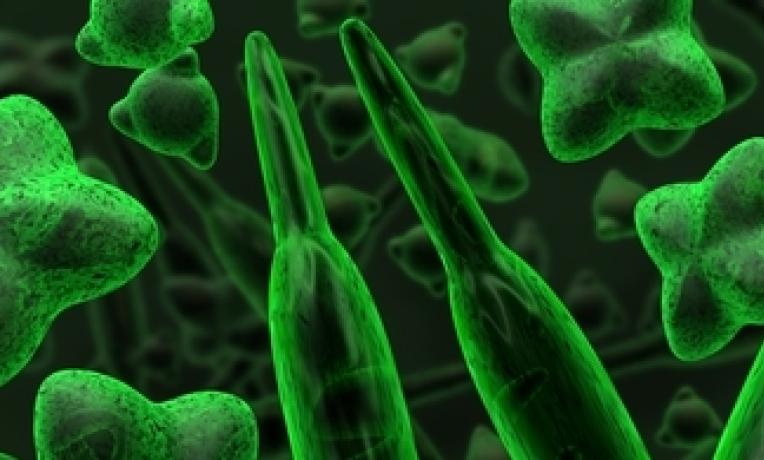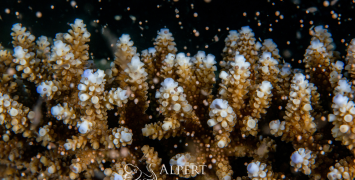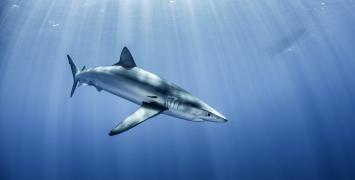Tiny fossils can lead to huge gains in understanding
The ocean is filled with microscopic algae that take up carbon dioxide (CO2) from the atmosphere in order to grow. A new study by researchers from the Geology Department at the University of Oviedo (Spain) shows that the algae may adapt to rising levels of atmospheric CO2 much sooner than previously thought, and in an unexpected way. This study, published today in Nature and co-authored by ERC grantee Heather Stoll, also provides evidence for a much closer link between atmospheric CO2 decrease and cooling and glaciations in the geological past.

“The ocean floor is a graveyard,” says Dr Heather Stoll. “Most mud at the bottom is made of tiny micro-fossils in a thick accumulation of layers. By digging deeper, researchers can get to older ones – with the result that we can work on accurately dated samples that are up to 60 million years old.”
Many of these tiny fossils are the remains of calcifying algae, with an inner ‘skeleton’ of calcite (a type of calcium carbonate), or ‘diatoms’, with cell walls made of silica – more familiar to us as the semi-precious stone opal.
“The opal is like a glass jar,” explains Dr Stoll. “Inside is a thin lining made of organic molecules produced by the algae in photosynthesis. The fossil can protect the organic matter inside for millions of years, like a test tube of samples reflecting the conditions in which the algae lived and died.”
Dr Stoll’s research group extracts the organic matter isolated inside these tiny ‘shells’ and studies the contents – looking for boron, calcite, isotopes of carbon, such as 12C and 13C, and isotopes of oxygen, such as 18O and 16O.
Evolution: adapting to changing climates
Evidence suggests the way such algae absorb carbon from sea water has changed over time. Today, algae can actively ‘pump’ bicarbonate (HCO3) into its cells, if local acidity or carbonate concentration requires it. But it seems that the populations living 60 million years ago absorbed by diffusion alone. “We are working to find new biochemical indicators for these changes and looking to see when these abilities evolved,” says Dr Stoll.
By relating past changes in carbon dioxide (CO2) levels – much higher at the time the oldest fossils were formed – to how algae adapted, this research should lead to a better understanding of the carbon cycles of the atmosphere and ocean. The algae’s response to environmental changes, and their role in the carbon cycle, has implications for how changes in the climate, atmosphere and ocean will interact in the future.
“The project started at the end of 2009, and our results so far relate to calibration of the new biochemical indicators for these pathways of carbon uptake,” says Dr Stoll. For example, boron is one of the chemicals that show when cells had to adapt from diffusing naturally due to lower concentrations of CO2.
“The next step is to measure the speed of adaptation to different changes in the environment,” she continues. “We are filling in the fossil record from both ends so as to focus on precisely when and how algae adapted to change.
“ERC funding has meant the difference between night and day for this project,” acknowledges Dr Stoll. “The grant has helped build a research group that includes a microfossil expert to identify the cells, and a biologist to grow algae cultures. A multidisciplinary team can lead to new insights and solutions.”
The project is also growing algae under different CO2 and acidity conditions in the laboratory. By combining these approaches the researchers hope to answer questions such as: “Do algae have a CO2 concentration threshold which switches off the ‘pump’? Could this affect which species are more successful? And could this affect the ocean’s ability to absorb CO2 from the atmosphere in future?”
For further information
At ESOF 2012 Dr Stoll is participating in the Scientific Session on ‘Adaptation or extinction?’ Responses to radical climate changes’ on Sunday 15 July 2012 from 10.45am to 12.15pm (Liffey Hall 2). For more information see http://esof2012.org
Website of Dr Heather Stoll’s Research Group






